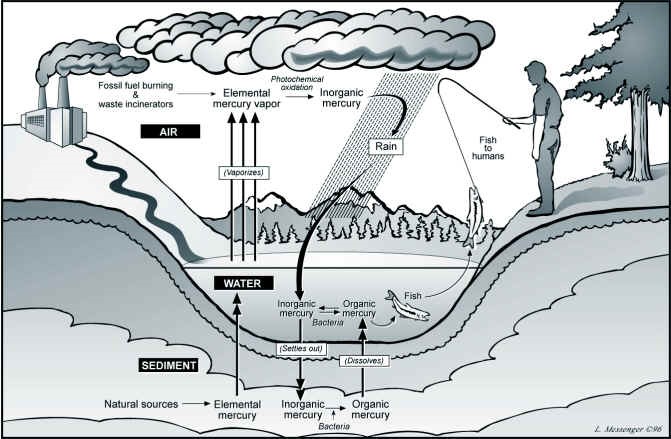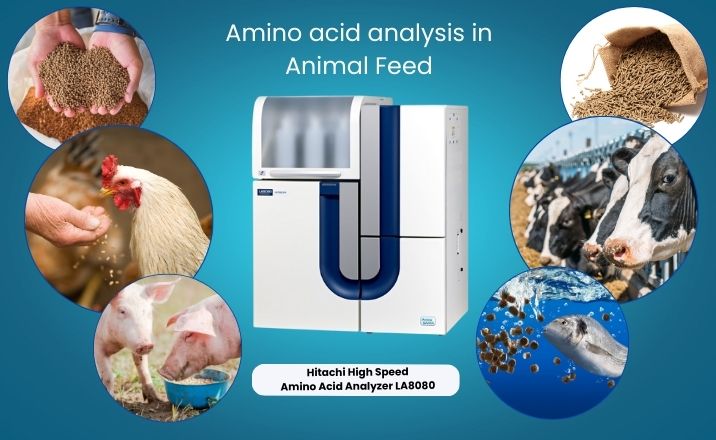Methylmercury: The Hidden Hazard in Our Waters and Food

Summary
- The blog explores the pervasive issue of methylmercury contamination, its origins, impacts, and regulatory measures.
- Methylmercury (MeHg), highly toxic and accumulating in aquatic ecosystems, poses significant health risks, especially for vulnerable populations, as it builds up in fish and shellfish, heightening health concerns.
- The perpetual presence of mercury in the environment is elucidated through its biogeochemical cycle, impacting ecosystems and human health.
- Various international regulatory bodies have established maximum permissible levels of methylmercury in food products, emphasizing consumer health protection.
- The blog concludes by emphasizing the importance of awareness, vigilance, and proactive measures to mitigate methylmercury’s adverse effects on human health and the environment.
What is Methylmercury ?
Mercury (Hg) is a persistent element in the environment due to natural occurrences and human activities. Mercury methylation is the process through which highly toxic methylmercury (MeHg) forms. Methylmercury is particularly concerning because of its ability to accumulate and magnify within the food chain. The primary route of human exposure to methylmercury is through fish consumption, with exposure levels varying based on fish contamination and dietary practices.
Sources and Absorption of Methylmercury in Aquatic Animals
Mercury is naturally present in the environment and can be emitted into the air through volcanic activity. Additionally, industrial pollution, particularly from the combustion of coal, fossil fuels, and household or industrial waste, releases mercury into the atmosphere. These mercury compounds eventually settle into the sediments of lakes, rivers, and oceans.
Within aquatic ecosystems, bacteria transform the inorganic mercury compounds into methylmercury. Fish absorb methylmercury primarily through their gills as water flows over them. Furthermore, fish accumulate methylmercury by consuming prey in their aquatic habitat.
Minimata Incidence in Japan
The first recognized and well-documented incidence of methylmercury poisoning occurred in Minamata, Japan, in the mid-20th century. In the 1950s, a chemical company released mercury compounds into Minamata Bay as industrial wastewater. This toxic compound contaminated the seafood, primarily fish, in the bay. Residents who consumed the contaminated fish developed severe neurological symptoms, leading to what became known as Minamata disease.
Mercury cycle

Mercury in the environment is constantly cycled and recycled through a biogeochemical cycle. The cycle has six significant steps:
- Degassing of mercury from rock, soils, and surface waters, or emissions from volcanoes and human activities.
- Movement in gaseous form through the atmosphere.
- Deposition of mercury on land and surface waters.
- Conversion of the element into insoluble mercury sulfide.
- Precipitation or bioconversion into more volatile or soluble forms such as methylmercury.
- Re-entry into the atmosphere or bioaccumulation in food chains.
Which Fish Contains the Highest Concentration of Methylmercury
King mackerel, tilefish from the Gulf of Mexico, tuna (Bluefin, Bigeye), shark, and swordfish are among the fish with the highest levels of methylmercury contamination.
Why Methylmercury is Harmful?
When methylmercury enters the human body, it forms disulfides that strongly bind to sulfhydryl groups in proteins. Consequently, these disulfides disrupt protein structures and enzyme functions, leading to poisoning and adverse health effects.
Health Risks Associated with Methylmercury Exposure
Exposure to methylmercury poses serious health risks, especially for vulnerable populations like pregnant women, infants, and children.
The adverse effects of methylmercury poisoning include problems with cognitive functions, such as memory, attention, language, and fine motor skills.
High exposures can result in sensory impairment, lack of coordination, and, in severe cases, even death.
Regulations on Methylmercury in Fish
Various international regulatory bodies have established maximum permissible levels of methylmercury in food products to safeguard consumer health. These regulations aim to minimize dietary exposure to methylmercury, a highly toxic form of mercury found in certain fish and seafood.
- Codex: The Codex Alimentarius, jointly established by the WHO and FAO, has set maximum levels (MLs) of methylmercury in fish products. Under Codex standards, no further testing is needed if total mercury is at or below the maximum level (ML) for methylmercury. If it exceeds the ML, follow-up testing is conducted to assess methylmercury levels.
Source: fao.org - European Union (EU): In the EU countries, Commission Regulation (EU) 2022/617 mandates reduced maximum mercury levels in fish and salt to lower dietary exposure. The Maximum mercury levels for various species of crustaceans are lowered to 0.5 mg/kg and for cephalopods and marine gastropods to 0.30 mg/kg. The maximum limit for food supplements and salt has been set at 0.10 mg/kg.
Source: eur-lex.europa.eu - Japan: According to Japan’s Ministry of Health, Labour and Welfare, the maximum permissible level of total mercury in fish and shellfish is 0.4 mg/kg, while for methylmercury, it is 0.3 mg/kg. These provisional limits do not extend to tuna, freshwater fish, and swordfish.
Source: mhlw.go.jp - United States (US): The US FDA recommends legal action for methylmercury levels exceeding 1 mg/kg in various forms of fish, shellfish, and aquatic animals. Analytical methods outlined by the Association of Official Analytical Chemists (AOAC) are used for methylmercury analysis.
Source: fda.gov - India: Under the Food Safety and Standards Regulations (FSSR 2018) in India, the maximum permissible limit for methylmercury in all food products is set at 0.25 mg/kg.
Source: fssai.gov.in
Why Choose Envirocare Labs?
Envirocare Labs is renowned as the leading provider for analyzing methylmercury and total mercury levels in fish and fishery products. Utilizing hyphenated techniques such as high-performance liquid chromatography (HPLC) to inductively coupled plasma-mass spectrometry (ICP-MS), we adhere to the method prescribed in the FSSAI Manual of Methods of Analysis of Foods-Fish and Fish Products.
Our rigorous analytical methods ensure accuracy and reliability, with a Limit of Quantification (LOQ) for methylmercury set at 0.15 mg/kg.
On 17th July 2023, FSSAI issued an order specifying that analysis of methyl mercury in fish shall be carried out as per method FSSAI 06.037:2023 of FSSAI manual of methods of analysis of foods – fish and fish products. Source – https://www.fssai.gov.in/advisories.php
This method uses high-performance liquid chromatography (HPLC) and inductively coupled plasma-mass spectrometry (ICP-MS). Organic and inorganic forms of mercury are separated using HPLC and detected by ICP-MS. The advantage of this method is that it can analyze mercury and methylmercury simultaneously. Total mercury is expressed as the sum of organic and inorganic mercury.
By choosing Envirocare Labs, you can trust our commitment to providing precise and comprehensive analysis for your safety and regulatory compliance needs.






